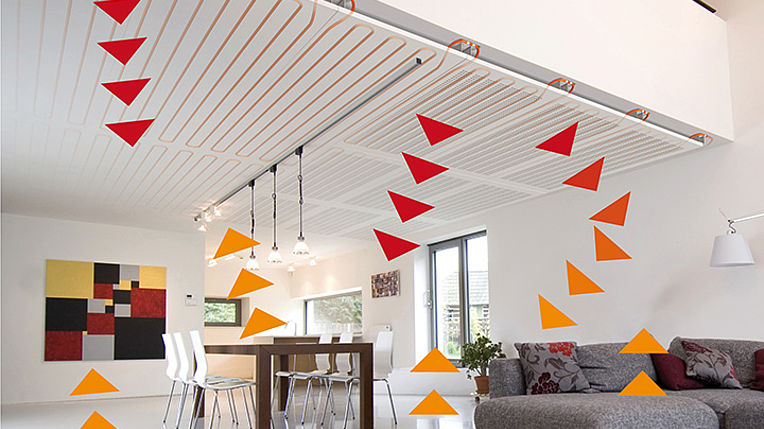The heating is running at full blast and yet it still feels cold and uncomfortable inside your own four walls? Read here what you can do against cold walls and what key role a wall surface heating plays in this.
Heating costs are rising, but temperatures continue to drop. Although the thermostat is optimally set, it just doesn't get comfortably warm? Especially in times of high energy prices and low temperatures, this is a problem that has a double negative impact: on the one hand, on your pocketbook and, on the other, on your personal state of mind. Because constant cold feels very uncomfortable not only for the body, but also for the mind.
The reason why it stays cold despite hot radiators is because of or in the walls. Cold walls create a feeling of uncomfortableness that cannot be cleared up even with radiators running through them. The key to the solution for more comfort and warmth in your own four walls: Well-insulated exterior walls and activating the walls with panel heating.
How do cold walls develop?
Especially in old buildings, cold walls in combination with conventional radiators are not uncommon. The feeling of "drafts" is not necessarily caused by real drafts through windows or doors, but by the room itself. This is because the low temperature of the interior walls causes drafts, as the room temperature cools down on the walls. Thus, not only the room itself cools down further, but behind it also hides the danger of damp walls and mold. What helps against this and how best to prevent it? With the right heating system and the right insulation.
Why is insulation so important?
So for cold walls to become a thing of the past, it takes several steps. In order to save energy and at the same time achieve greater well-being in one's own home, it is therefore advisable to switch to wall heating systems, which in combination with newly insulated exterior walls ensure maximum comfort. In the course of renovating an old building, this can already be taken into account in the planning process. Insulation helps to achieve comfortable wall temperatures, so that the general feeling of living is also improved. This is because walls have a certain regulating effect on the indoor climate in terms of humidity and room temperature. Proper insulation of the facade from the outside therefore also has a thermal effect on the interior walls.
What effect does surface heating have?
For optimal and comfortable results, in addition to comprehensive insulation from the outside, surface heating is needed to temper the wall from the inside. Surface heating is a comfortable and energy-efficient heating system that uses radiant heat to evenly warm the room over large areas - in a mild and pleasant way. If the surfaces, i.e. the walls, are activated, this also prevents mold growth by maintaining constant temperatures. In addition, surface heating systems save energy through low-temperature systems, which - as the name suggests - require lower flow temperatures. Finally, the big plus point that makes a noticeable difference is comfort. If the walls are pleasantly activated with panel heaters, this provides cozy warmth instead of cold walls.
Which products are best to use?
To achieve maximum comfort particularly well, wall heaters are recommended in two designs:
- In drywall construction: here it is recommended to use gypsum fiberboard with pre-integrated pipes. For this purpose, Variotherm offers its ModulWand, which has been tried and tested over many years and is of absolutely high quality. Here, heating (as well as cooling in summer) and finished wall are integrated in one system. These systems can be installed quickly and are therefore popular with installers and drywallers. For end customers, this means a
- Plastered wall: If an interior plaster is applied, high-quality aluminum composite pipes should be used, which in particular have a profiling. The reason for this is quite simple: due to the increased surface of the pipe there is an optimal heat transfer.
What is important is a quick and uncomplicated installation process with the best result: comfort and absolute well-being in one's own four walls - which thus no longer radiate cold at all, but pleasant warmth and finally also real comfort in winter.









